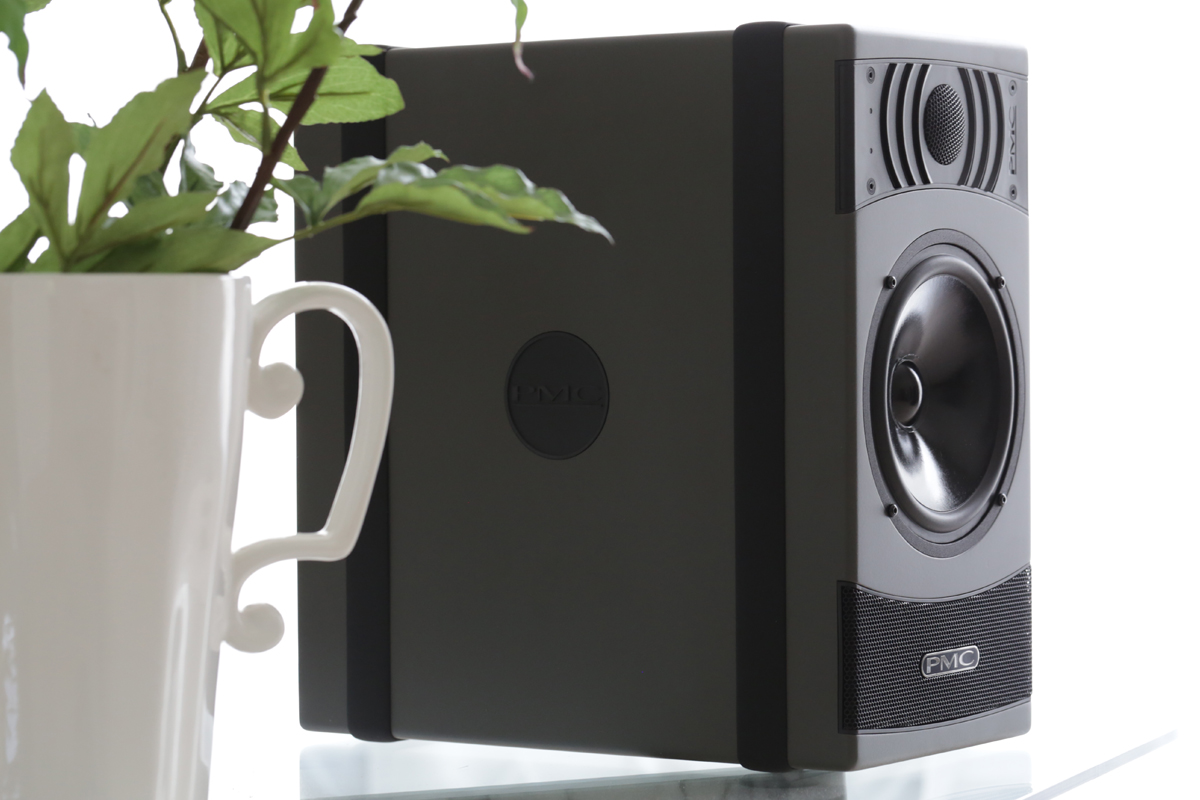As regular visitors to this site surely know by now, I’m a big proponent of active loudspeakers. My reference system is built around a pair of Dynaudio Focus 200 XDs, which have dedicated 150W class-D amps for their 1” tweeters and 6.5” woofers. This choice was driven by domestic considerations -- it would be almost impossible to fit a system of audio separates into the living room of the century-old row house I share with my much better half.
Active speakers have performance as well as domestic benefits, as Doug Schneider outlined in a feature published on SoundStage! Hi-Fi in May 2017: “direct coupling of the power from the amplifiers to the drivers, for better control; more efficient use of power from the amplifiers, for improved power delivery; and the ability to create more accurate response curves, for flatter overall response and better optimization of the signal for each driver’s capabilities.”
Despite these advantages, active loudspeakers were long a tough sell in the consumer hi-fi market, but that’s changing -- Elac and KEF now both enjoy very good sales of their active speakers.
In the professional market, however, active speakers have been well accepted for some time for applications such as studio monitors, and there’s no reason these speakers can’t be used for listening at home -- as my recent experience with PMC’s result6 nearfield minimonitors confirmed.
Outside and in
Priced at $2950/pair (all prices USD), the result6 is the entry-level model in PMC’s line of active studio monitors. Speakers made by the Professional Monitor Company, to use this British company’s full name, are used in studios throughout the world in the recording of sound for musical releases, films, and TV.
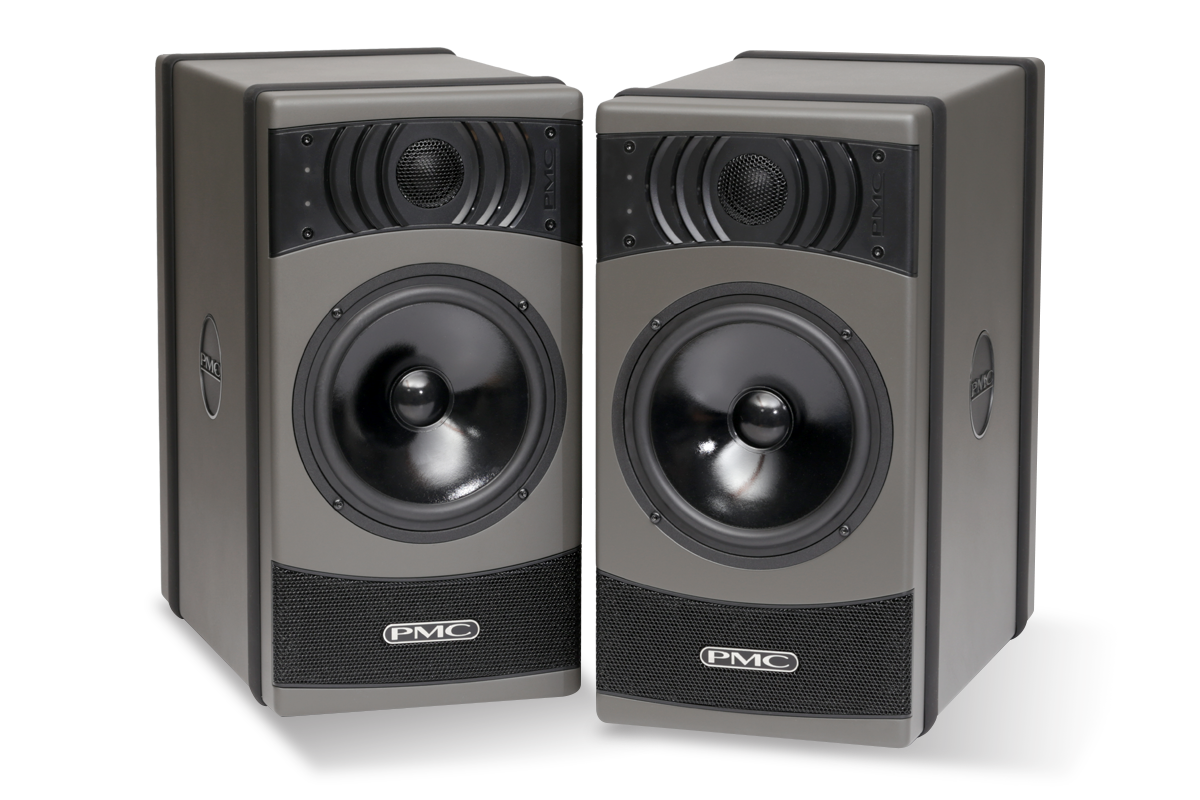
Each result6 enclosure houses a 6.5” (170mm) woofer with doped natural-fiber cone, powered by a built-in, 100W class-D amplifier; and a 1” (27mm) soft-dome tweeter, powered by a 65W class-AB amplifier. The active crossover, centered on 2kHz, with a slope of 24dB/octave, is implemented in the analog domain, with a network comprising inductors, capacitors, and resistors. The principle is the same as the crossovers in conventional passive speakers, except that parts with lower voltage ratings can be used, as the crossover accepts line-level rather than speaker-level signals.
The result6 incorporates two trademarked PMC technologies: Advanced Transmission Line (ATL) loading for the woofer, and D-Fins surrounding the tweeter.
A transmission line is a folded labyrinth inside the enclosure, behind the woofer, and is lined with a special foam that absorbs all but the lowest frequencies. This prevents the woofer’s backwave from bouncing off the interior of the enclosure and back toward the cone, where it would interfere with the cone’s motion. The ATL improves bass transients and midrange clarity, PMC claims. The lowest frequencies in the backwave travel through the transmission line to emerge from a large vent on the speaker’s front baffle, the frequencies of these soundwaves now in phase with the woofer’s direct radiation. This aspect of the ATL design improves the speaker’s low-frequency extension, PMC says.
D-Fins are the parenthesis-shaped ridges to either side of the result6’s tweeter. These broaden the dispersion of high frequencies and eliminate diffraction effects, PMC says, resulting in a wider sweet spot.
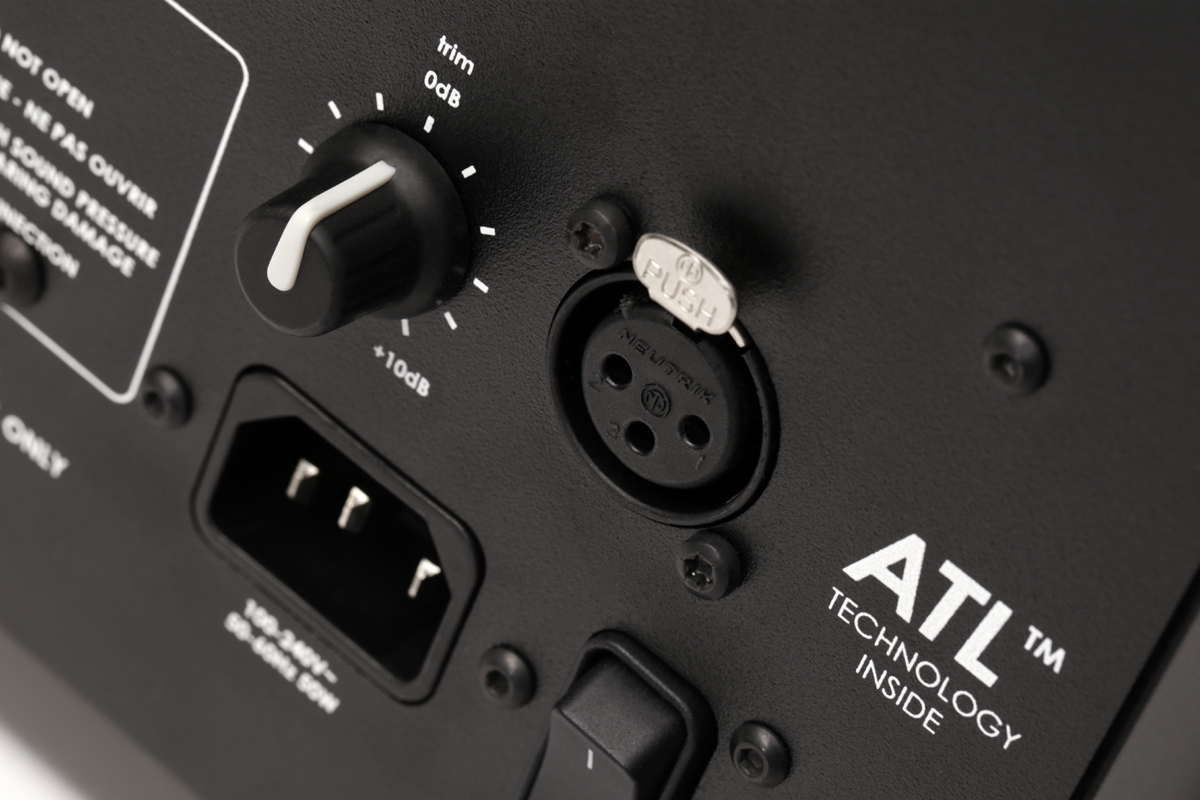
The result6 is an all-analog design. On the rear panel of each speaker is a three-bladed IEC power connector, an on/off switch, a trim control, and a balanced (XLR) line-level analog input. While primarily intended for use with a mixing console with balanced (XLR) output, for home systems the result6 can be connected to an amp or preamp with balanced (XLR) output. If your source component has only unbalanced RCA outputs, you’ll need RCA-to-XLR adapters.
The result6’s distinctly utilitarian look suits its primary application as a studio monitor. Measuring 15”H x 7.8”W x 14.2”D and weighing 17.6 pounds, the speaker has a dark-gray finish, and two black, rubber-like “decoupling bands” wrapped around its side, top, and bottom panels. Besides making it easier to grip and move the speakers, the bands damp cabinet resonances. In the center of the front baffle is the shiny black woofer cone. Above it, the tweeter is covered with a perforated metal grille; below the woofer is a second metal grille that covers the ATL’s vent and is emblazoned with the PMC logo. The shape of the lower grille complements that of the rubberized assembly of tweeter and D-Fins above, giving the front baffle a pleasing symmetry. A blue-white LED at upper left lights up when the speaker is turned on, and more black PMC logos are molded into the side panels.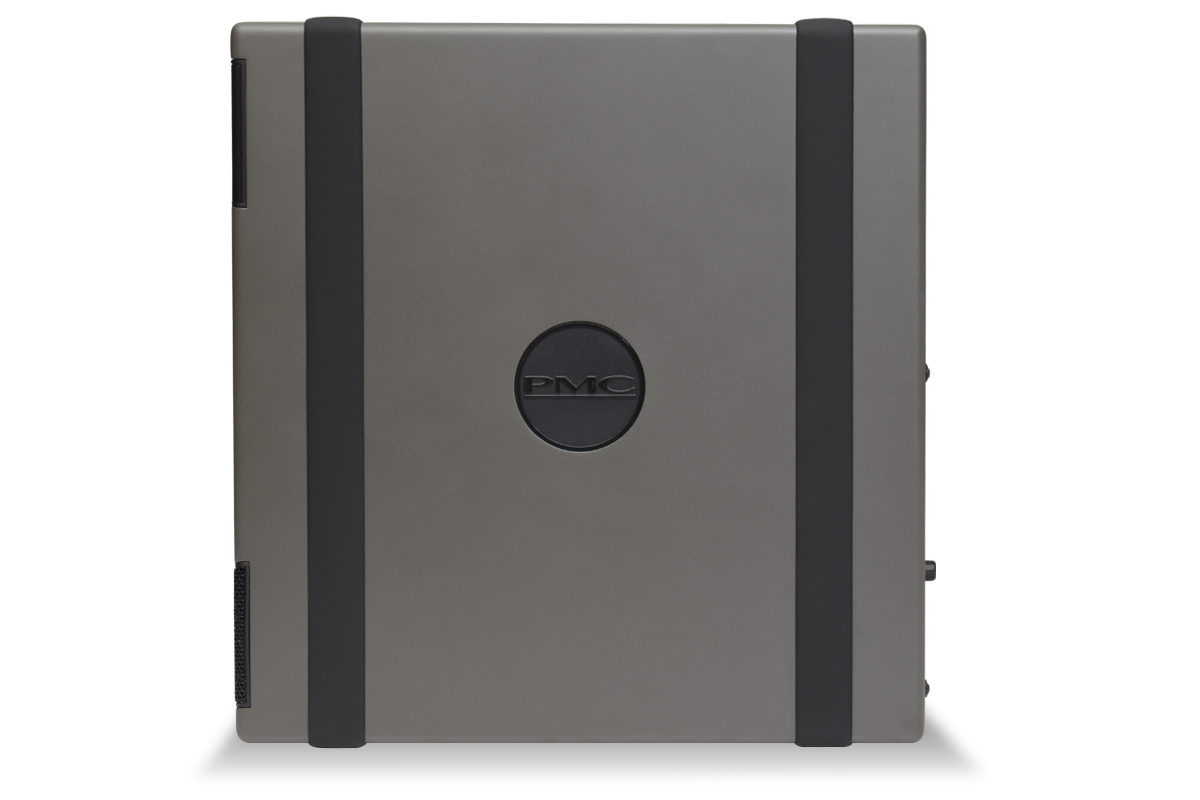
A result6 would never be mistaken for a fine piece of furniture, but the pair of them blended surprisingly well into our living room, thanks to their neutral gray enclosures. I wouldn’t want them taking up permanent residence chez Brockhouse, but in a more casual space, I think a pair of result6 speakers would look really funky -- especially if that space is used by an active musician (or wannabe!).
System and setup
PMC calls the result6 a nearfield monitor. That’s not quite how I used them, and I doubt it’s how most people would use such speakers for listening at home. I set them up on the Dynaudio Stand 6 stands that normally support my Focus 200 XD active speakers, with the PMCs’ rear panels 15” from the front wall of my room. The speakers were 7’ apart, toed in slightly toward the sweet spot on my sectional sofa, 7’ from their front baffles. While 7’ is a little farther than “nearfield,” it’s still in the neighborhood. To power the PMCs, I used the 2m-long AudioQuest HRG-Y3 power cords I normally use with my Dynaudios.
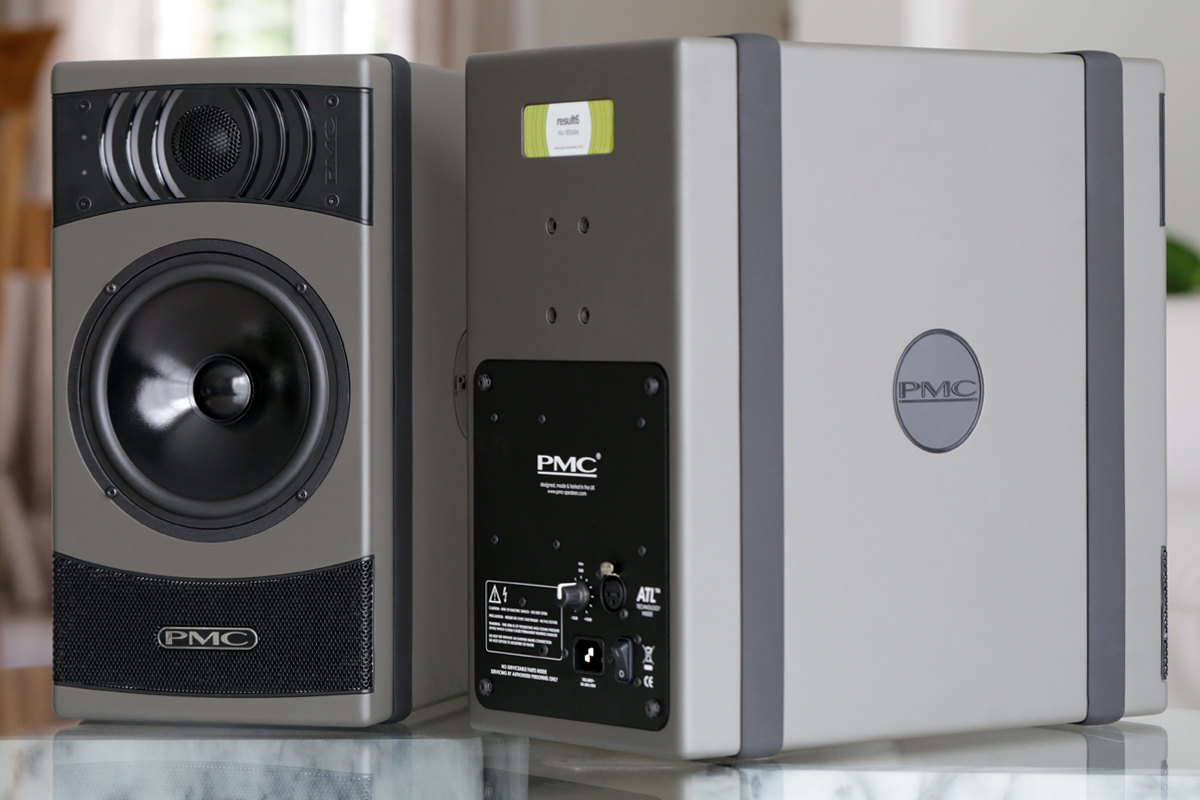
I paired the result6es with a Lumin T2 network player ($4500, review forthcoming), which has both unbalanced (RCA) and balanced (XLR) outputs, as well as BNC S/PDIF and USB digital outputs. The Lumin is a premium streamer, with full MQA decoding, and maximum resolutions of 32-bit/384kHz PCM and DSD512. I connected the T2 to the speakers with 2m-long Argentum Acoustics Mythos interconnects (XLR), and to the wall outlet with a 2m Wireworld Stratus 7 power cord.
Listening
Throughout my listening, a few characteristics emerged. I found the PMC result6 a really fun, exciting speaker to listen to, and very expressive. Dynamics were fast, almost explosive, but never overbearing. The PMCs’ presentation of space was excellent, with very good image specificity. As you’d expect from a professional monitor, the result6 was very revealing, presenting me with whatever was in the recording, warts and all.
A case in point is a fantastic 1991 recording of Vivaldi’s The Four Seasons performed by Europa Galante under the direction of the violin soloist, Fabio Biondi (24-bit/44.1kHz FLAC, Naïve/Qobuz). The Four Seasons is probably the most overplayed baroque composition in the catalog, but Biondi and his players make it sound completely fresh, with fast tempos, and sudden dynamic shifts that highlight such episodes as the thunderstorm in the first movement of the second concerto, Summer.
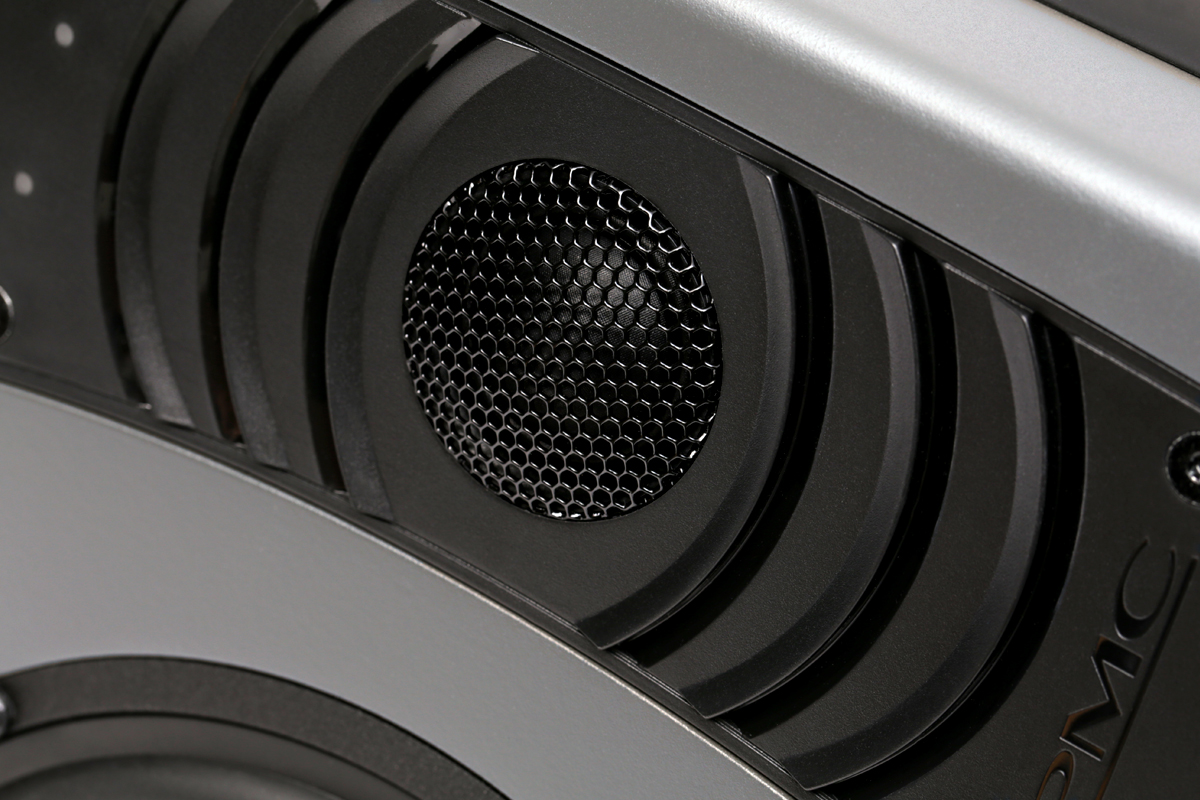
The sound of this recording isn’t ideal -- in particular, the close-miked period strings sound kind of wiry. The PMCs did not gloss over this characteristic. Summer begins with a quiet passage by the full string orchestra and harpsichord continuo, and it sounded lovely through the PMCs. They created a big, expansive soundstage that convincingly re-created the reverberant space where this recording was made. Just past the 1:30 mark the drama ramps up, as a rapidly bowed solo-violin passage heralds an impending storm. Through the PMCs, I was a little too aware of Biondi’s bow sawing on the strings. That wasn’t the speakers’ fault -- they were presenting the music as it was recorded, without sweetening it -- and there was a big upside: the way the PMCs tracked the sudden dynamic shifts that make this performance so expressive. Moreover, in quiet passages, the violins’ upper strings sounded exquisite.
With great recordings, the PMCs delivered unbounded bliss. For sheer joy, it’s hard to top “Spain,” from the Chick Corea Trio’s Trilogy (24/96 FLAC, Concord Music/ProStudioMasters). In this track, recorded during a December 2012 concert in Madrid, the trio is augmented by Niño Josele on guitar and Jorge Pardo on flute. Throughout the long acoustic-guitar solo at the beginning, I was wowed by how the PMCs conveyed the rich, woody tone of Josele’s instrument. Detail and dynamics were just as impressive. I could hear and appreciate every note: Josele’s rapid finger-picking of the main melody on the upper strings, supported by his thumb picking out the harmony on the lower strings. It didn’t sound at all etched or artificially highlighted -- the portrayal was completely natural. Similarly, the PMCs illuminated flutist Pardo’s breathing and blowing, but without exaggeration.
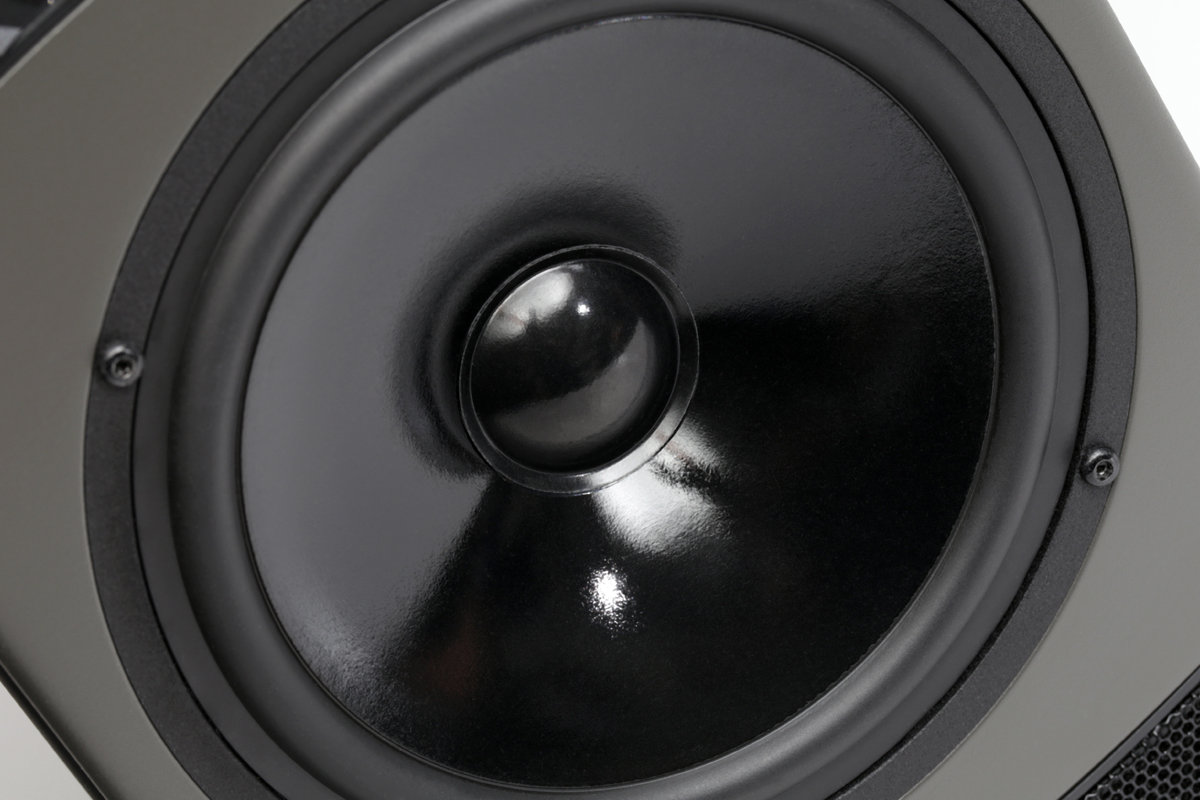
The PMCs’ portrayal of the main trio was every bit as satisfying. Brian Blade’s attacks and rolls on cymbals and hi-hat had an ideal degree of metallic sheen. Delicate snare rolls were beautifully rendered, while rim shots exploded from the speakers without sounding at all harsh or overbearing. Christian McBride’s double-bass solo was fast and articulate, his instrument sounding tuneful throughout its entire range. I was also aware of the huge variety of Corea’s touch in “Spain,” and of his pedaling. What really struck me was how well the result6es resolved all these individual elements while presenting them as a unified whole. Throughout the track, the PMCs really swung, inviting me to immerse myself in the music.
With their ability to illuminate every element in a mix, the PMCs made records I’d heard a gazillion times sound fresh again. Listening to the 2013 remastering of Van Morrison’s Moondance by Elliot Scheiner, one of the audio engineers who originally recorded the album (24/192 ALAC, Warner Music/HDtracks), I loved how, in the title track, the flute and strummed guitar just appeared at the left of the soundstage, the horns and piano at right, and the drums, bass, and lead vocal at center. No drama, no pyrotechnics -- every element was just there. The result6es tracked Morrison’s voice beautifully in this track as well as in “Into the Mystic,” another of my favorite songs on this album. With the latter, the PMCs’ microdynamic capabilities were apparent in their presentation of the two acoustic guitars: fingerpicked at left, strummed at right. While it was easy to appreciate every phrase and chord, the sound was never etched -- those guitars sounded completely natural.
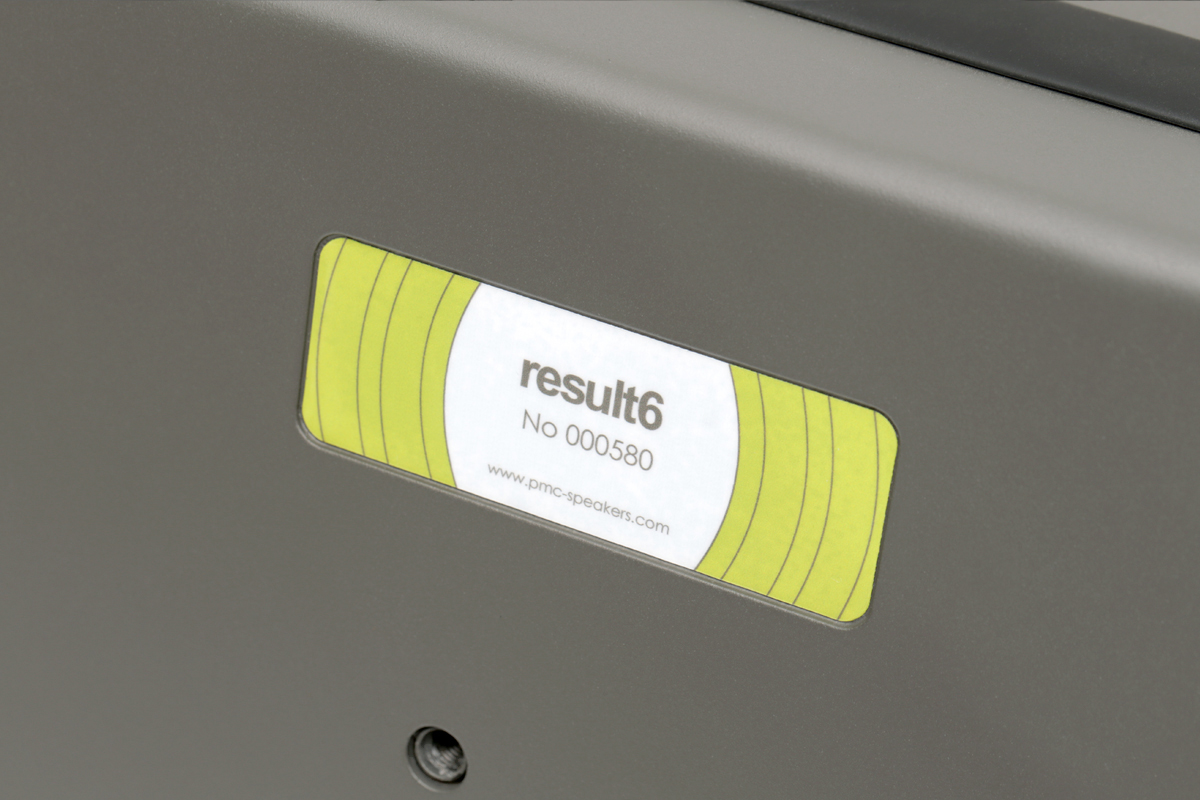
While the result6es look a bit rough-and-ready, they were capable of exquisitely beautiful sound, as I confirmed by listening to Il Pergolese, a wonderful jazz-classical crossover album featuring soprano Maria Pia de Vito, cellist Anja Lechner, pianist François Couturier, and percussionist Michele Rabbia (24/88.2 ALAC, ECM/HDtracks). As the title conveys, this 2013 release is a tribute to the Neapolitan baroque composer Giovanni Pergolesi (1710-1736).
“Ogne Pena Cchiù Spietata,” based on an aria from Pergolesi’s opera L’Olimpiade, sounded gorgeous through the result6es. Lechner’s plucked cello had a palpable woody presence, and her extended bowed improvisation was hauntingly expressive. The sound was not at all etched or excessively rosiny. The presentation of Couturier’s piano was just as successful -- satisfyingly resonant in the lower octaves, articulate yet full in the middle octaves, crystalline up top. Rabbia’s marvelously subtle contribution on percussion -- hand-struck drums, quiet chimes -- sounded just right, not overlit, just there in the background.
What the PMC monitors did with de Vito’s rich soprano bordered on magic. The sound was full and embodied, with a real flesh-and-blood quality, every modulation beautifully illuminated. Again, what most struck me wasn’t how the PMCs resolved these individual elements, but how they presented the marvelous interactions among these musicians. In the end, it was more about the sum than the parts.
Comparison
Elac’s Navis ARB-51 active speaker is a natural comparison for PMC’s result6: Both are stand-mounted, all-analog designs with active crossovers. However, in addition to balanced XLR inputs, the ARB-51s have unbalanced RCA line-level inputs -- and at $1999.98/pair, the Elac is only two-thirds the PMC’s price of $2950/pair, and is more attractively finished.
The ARB-51 is a three-way, rear-ported design, with a coaxial driver comprising a 4” aluminum midrange cone and a concentrically mounted 1” soft-dome tweeter, below which is a 5.25” aluminum woofer. The woofer is powered by an internal 160W BASH amplifier, the midrange driver by a 100W BASH amp, and the tweeter by a 40W class-AB amp.
Through the Elacs, Il Pergolese sounded richer and more dynamic than through the PMCs. However, dynamics tracked up and down more naturally through the PMCs, which made it easier for me to appreciate soprano de Vito’s expressive word-painting. I also found the PMCs more resolving -- it was easier to follow each musician, and their interplay with each other. The Elacs were slightly congested by comparison. The PMCs threw a larger soundstage, and “disappeared” to a greater degree than the Elacs did. And the result6es were faster and more articulate, which was especially noticeable with Rabbia’s percussion.
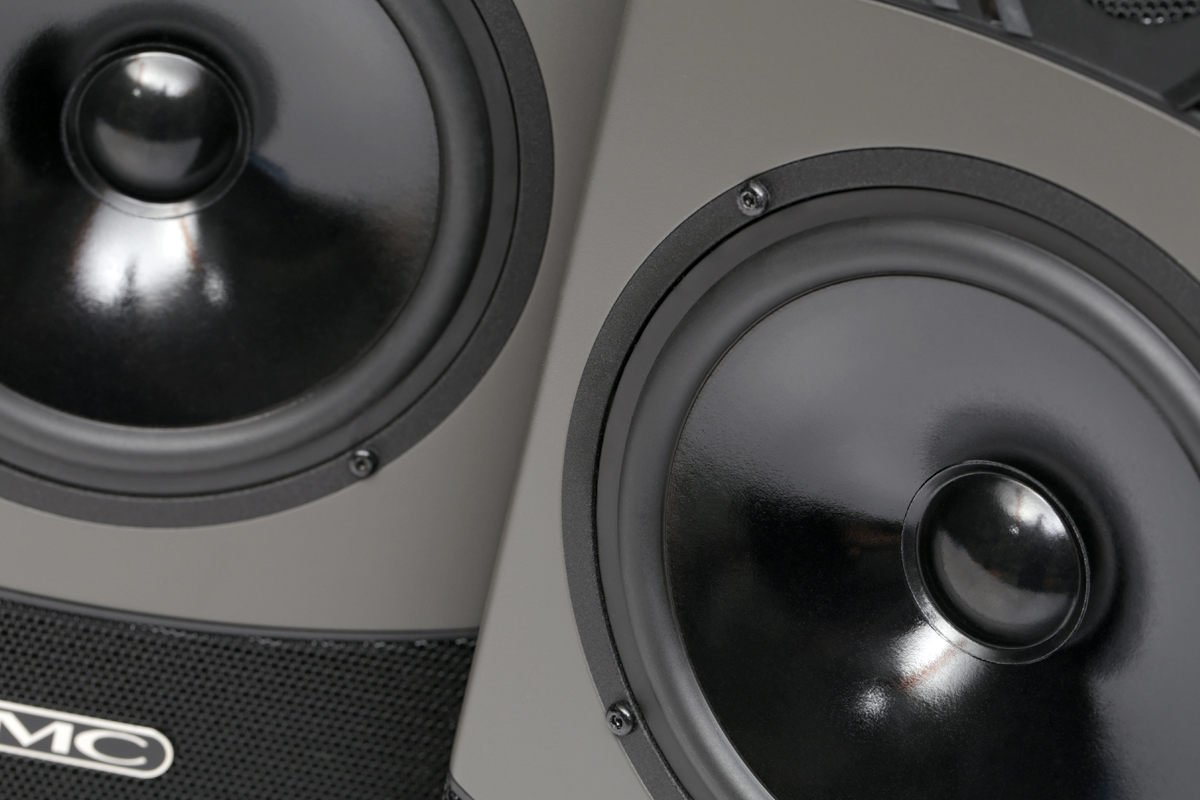
In the recording of Vivaldi’s Four Seasons by Fabio Biondi and Europa Galante, the basso continuo section sounded richer, deeper, and fuller through the Elacs -- which I really appreciated. Overall, this recording sounded harder through the PMCs, but the apparent size of the recording venue was larger. The scraping of the bows on the strings was less obtrusive through the Elacs than through the PMCs. Although the violin solo announcing the storm in the first movement of Summer sounded a little wiry, what was more striking with the Elacs was the sheer excitement of Vivaldi’s writing, and the way these creative musicians interpreted it.
Similarly, I found Niño Josele’s guitar solo at the beginning of Chick Corea’s “Spain” richer and woodier through the Elacs, but more articulate and clear through the PMCs. Christian McBride’s bass and Brian Blade’s big floor tom were much better controlled via the PMCs. Overall, with this track I found the PMCs more incisive and refined, with subtler dynamics and better midrange clarity. This made it easier to appreciate Corea’s wonderful pianism. If the Elacs were more about tone, the PMCs were more about touch.
None of this diminishes my admiration for Elac’s Navis ARB-51, which received a Reviewers’ Choice award on this site earlier this year. It costs $1000/pair less than the PMC, has more connectivity options, and is finished much more luxuriously. I’d be happy to see the Elacs in my living room. I can’t say the same about the PMCs.
Conclusion
After my experience with the result6 minimonitor, I’m not at all surprised that PMC is so successful in the professional market. Home listeners, I think, will have two main problems with the result6: connectivity and cosmetics. How many consumers will be happy with active speakers that have only XLR inputs? And what sorts of living spaces will suit the result6’s utilitarian styling?
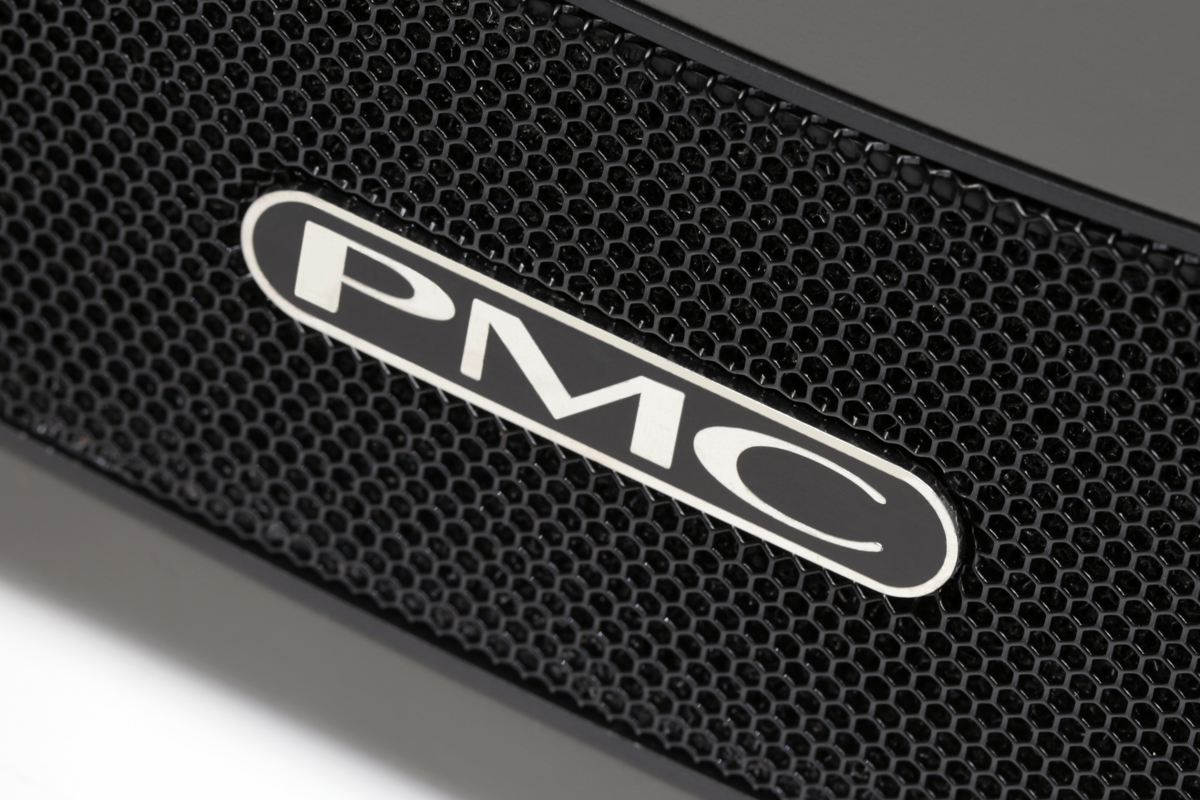
As to the sound, it should be clear by now that I really liked what I heard from these speakers. You might expect a studio monitor to be too revealing for home listening -- that every sound would be excessively spotlit. But in my listening that was hardly ever the case. Almost without exception, I found the result6es eminently enjoyable and listenable.
While best known for its professional products, PMC also makes a broad consumer line with many highly regarded passive speakers as well as the SE Active models: high-end speakers based on PMC’s flagship studio monitors. Having heard the result6, I hope PMC is thinking about adding more active speakers to its consumer line.
. . . Gordon Brockhouse
Associated Equipment
- Source -- Lumin T2 network player, streaming from a modified mid-2011 Apple Mac Mini computer running Roon Core 1.6
- Active speakers -- Elac Navis ARB-51
- Interconnects -- Argentum Acoustics Mythos (balanced, XLR, 2m)
- Power cords -- AudioQuest HRG-Y3 (2m, for speakers), Wireworld Stratus 7 (2m, for streamer)
- Network -- Google Wifi three-node mesh network
PMC result6 Active Loudspeakers
Price: $2950 USD per pair.
Warranty: Five years parts and labor.
PMC Limited
Holme Court
Biggleswade SG18 9ST
England, UK
Phone: +44 (0)870-4441044
Fax: +44 (0)870-4441045
Website: www.pmc-speakers.com



